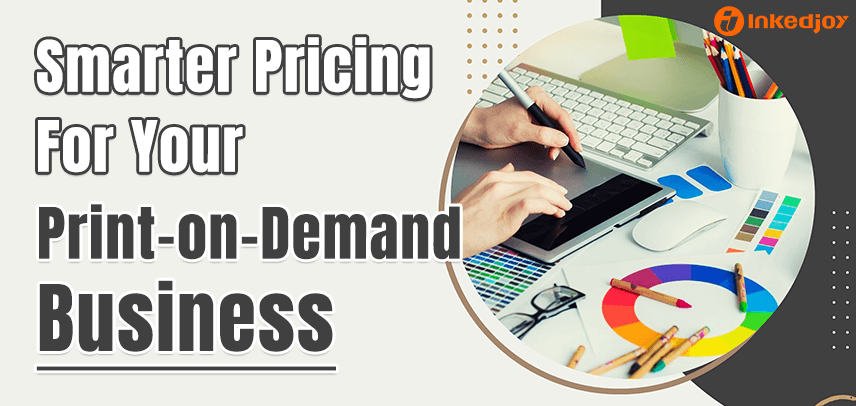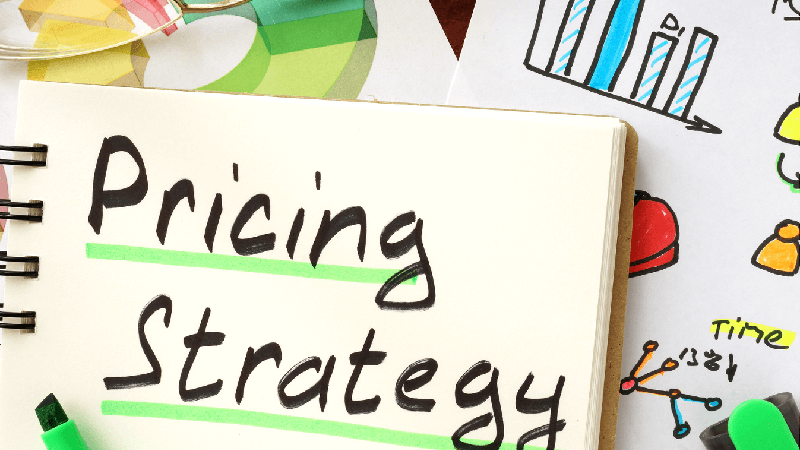
Smarter Pricing for Your Print-on-Demand Business
If you're in the print-on-demand business, just tacking a few dollars onto your costs isn't going to cut it. To build a truly profitable store, you need to get smarter about how you price your products. Moving beyond a simple markup means looking at what your designs are truly worth to your customers and how the market works. This approach will help you find the pricing sweet spot that maximizes your earnings.
First Things First: Get a Handle on Your Real Costs
Before you can set a profitable price, getting a real handle on every single cost is the only place to start. This goes way beyond the base cost of the t-shirt or mug from your supplier.
You have to account for everything. This means putting a value on your design time, even if you're the designer. Don't forget the transaction fees from your payment processor or the fees from the marketplace you sell on. Shipping costs are another big one.
Even taxes, which can change depending on where you and your customer are, need to be part of the equation. Once you have a crystal-clear picture of your total cost for each item, you can start using more effective pricing methods that actually build your profit margin.
Price for Value Not Just an Item
With your costs sorted, you can shift your mindset. The price of an item isn't just about what it costs to make; it's about what it's worth to the person buying it. This is the core of value-based pricing.
Your unique artwork and the specific community you cater to have an inherent worth that can be much higher than your expenses. A t-shirt with a clever inside joke for a passionate hobby group, for example, is worth far more to a member of that group than a generic shirt from a big box store.
This is where you put on your detective hat. Spend time in the online spaces where your customers hang out—forums, social media groups, and community pages. See what they get excited about, what they complain about, and what they're willing to spend on other merchandise they love.
For a POD service like Inkedjoy, where unique creations are the main event, this approach is golden. You're not just selling a product; you're selling an identity, a laugh, or a connection. That feeling is what allows you to charge more.
Small Pricing Tricks That Make a Big Difference
Once you've set a value-based price, you can fine-tune it with a few psychological tricks. These are small adjustments that tap into how people naturally view numbers, and they can have a real impact on sales.
- Charm Pricing: The classic ‘.99' ending. A price of $24.99 just feels cheaper than $25.00 because our brains anchor on that first digit. It's a small change that can make a product seem more accessible.
- Prestige Pricing: On the flip side, if you're selling a high-end, premium design, use a clean, round number like $50 instead of $49.99. It can make the item feel more luxurious and substantial.
- Bundling: Encourage larger purchases by offering a deal on a set of items. You could package a t-shirt, tote, and sticker with a matching design for a single, slightly discounted price. This boosts your average sale and shows off more of your catalog.
- The Decoy Effect: This is a clever one. You introduce a third option to make one of your other options look like a fantastic deal. For example: a standard mug for $15, a larger premium mug for $22, and a premium mug plus a matching coaster for $23. That tiny $1 difference makes the bundle almost irresistible.

Use Strategic Models for Long-Term Growth
Beyond one-off tricks, you can build your entire pricing strategy around more complex models. The online world of POD is perfect for this kind of flexible pricing. A great approach is tiered pricing.
For one design, you could offer it on a basic tee, a premium ringspun cotton tee, and a cozy hoodie. Each has a different price point, letting you appeal to customers with different budgets while showcasing the same great art. Just make sure the value jump between tiers is clear.
You can also play with your launch strategy through penetration vs. skimming. To make a splash with a new design, you might use penetration pricing—starting low to get quick sales and rack up positive reviews, then raising the price later.
For a highly-anticipated or truly unique piece, you could try price skimming—starting high to capture your most enthusiastic fans, then slowly lowering the price to bring in a wider audience.
Of course, it's always smart to know what the other guys are charging. Competitor pricing is a key part of positioning yourself. This isn't about blindly copying them. It's about making a conscious choice.
If your quality and designs are a cut above, price them that way. If you're aiming to be the more affordable option in your niche, that's a valid strategy too.
How to Run Promotions Without Hurting Your Brand
Sales and promotions are a different beast entirely. They're about creating short-term buzz and urgency by temporarily lowering your prices.
A well-timed flash sale or holiday discount can drive a huge spike in orders and clear out old inventory. Offering special deals to your email list or social media followers is also a fantastic way to build a loyal following that keeps coming back.
The key is to use them strategically. If you're constantly running sales, you'll just train your customers to wait for a discount, which cheapens your brand over time. Use them as a special event, not a daily expectation.
Finding Your Pricing Sweet Spot
There's no single magic bullet for pricing. The most successful POD sellers mix and match these strategies to find what works for their designs and their audience. Don't be shy about testing different price points and seeing what the data tells you. When you move past a simple cost-plus formula and start pricing with intention, you give your creative business the best possible chance to grow and prosper.



